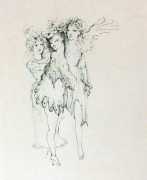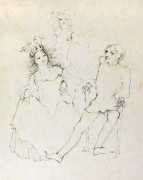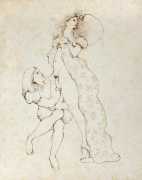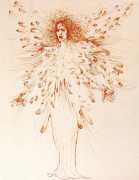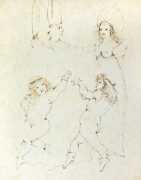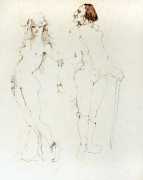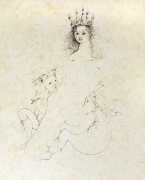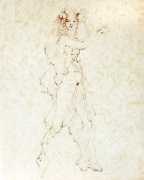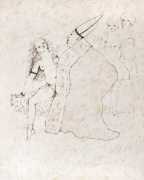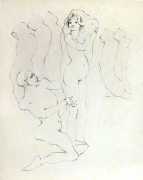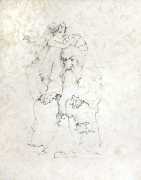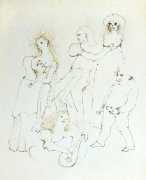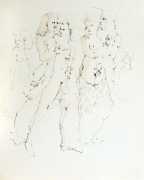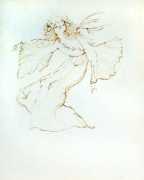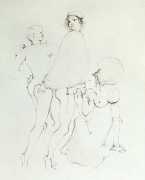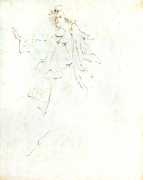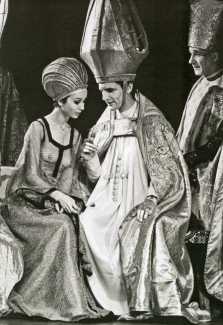
Leonor Fini’s most ambitious and controversial project in the late 1960s was to design stage sets and costumes for German avant-garde playwright Oskar Panizza’s Le Concile d’amour (Das Liebeskonzil or The Council of Love), commissioned by Lars Schmidt for the Théâtre de Paris. Panizza’s play, for which he was jailed for obscene blasphemy in Munich in 1895, was rediscovered by André Breton and became a favourite with the surrealists.
The action takes place in Heaven and at the court of Pope Alexander VI in Rome in 1495, and concerns God’s plan for punishing human sexual depravity by introducing syphilis. Leonor was excited by the opportunity to design costumes that would enhance the sexual provocation underlying this satire on the Catholic church. For the heaven scenes she gave God ragged clothes and a long beard, Jesus was naked except for a loincloth and a large crown of thorns, and Mary had a long robe to which were attached votive offerings and photographs of suppliants. The Pope and his entourage wore pastiches of clerical garments with enormous and elaborate headdresses, and they were accompanied by courtesans who were naked under transparent veils, ladies of the court in dresses revealing their bare breasts, and athletes with large, fake erections. Leonor went to great trouble to choose suitable materials at her favourite shops – for fabrics the Marché St Pierre, near Clignancourt, and for ribbons and accessories Ultramode near the Passage Choiseul.
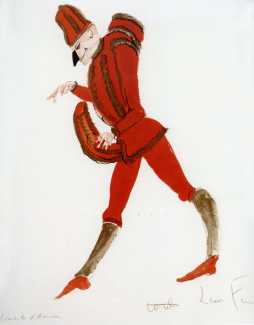
Le Concile d’amour was a great success and ran for three months, winning the Prix des Critiques for the best theatre designs of the year, though many people were shocked by Leonor’s costumes. She explained that ‘it was erotic because it needed to be done like that, not because I wanted to provoke. There were big problems because the girls wanted to wear horrible slips under the transparent veils and I said no. I said they could shave themselves if they wanted to.’
She was very pleased with her work and later contributed illustrations for published versions of the play. An English translation of 1973, with an introduction by André Breton, included five wash drawings as well as photographs of the 1969 production, and a French version of 1975, shown here, was illustrated with twenty-two large etchings. Many of the images are extremely erotic, successfully capturing the libidinous atmosphere of the play.
Paraphrased from Peter Webb’s Sphinx: The Life and Art of Leonor Fini.
The 1975 portfolio edition of Le Concile d’amour was published by Grafik Europa Anstalt, Geneva, in a limited numbered edition of 150 copies.
Peter Brown, Professor of German at the State University of New York, is an acknowledged expert on Oskar Panizza, and has written a comprehensive and fascinating account of the author and his life and times. Oskar Panizza and The Love Council: A History of the Scandalous Play on Stage and in Court, with the Complete Text in English and a Biography of the Author was published in 2010, and includes the first complete English translation of The Love Council.


